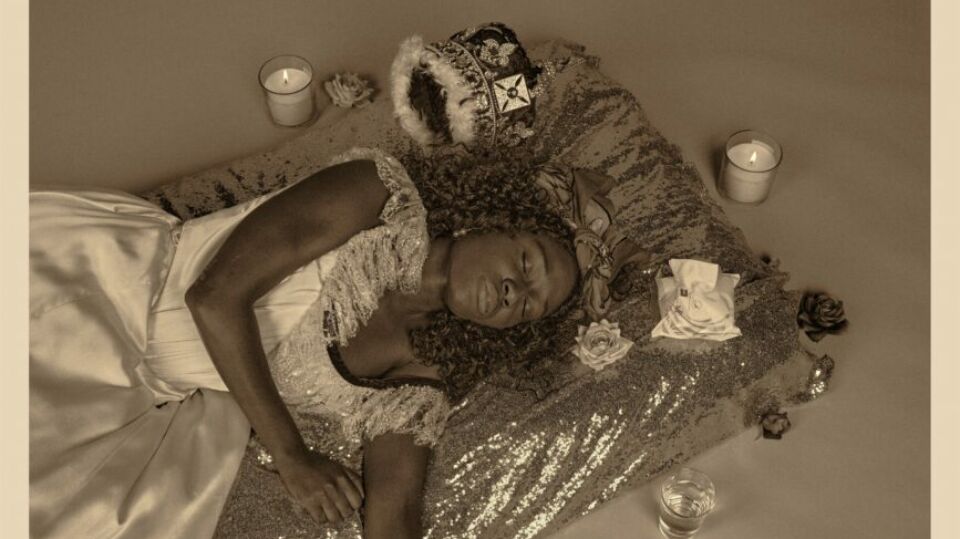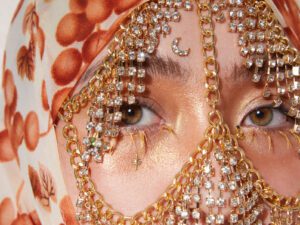“The Cakewalk was originally performed by enslaved people who mocked and mimicked slaveholders and high society,” photographer Heather Agyepong (b. 1990) writes in the statement accompanying Wish You Were Here, her current exhibition at Centre for British Photography. “The dance involved couples in square formations, strutting, prancing and kicking.” However, as the performance’s popularity amongst white audiences grew during the 1900s, its satirical focus was lost. Amidst a surge of interest across America and Europe, the Cakewalk “started to become this grotesque version of what Black performance was.”
Now, Agyepong is reclaiming the art form. For her London show, the British-Ghanaian artist draws inspiration from one of the foremost African-American stars of early 20th century, Aida Overton Walker. The vaudeville performer and actress pushed against racial barriers in theatre at the height of Victorian inequality, working to remove harmful depictions of Black actors at the time. She performed alongside comedy duo Bert Williams and George Walker, achieving record success in shows such as The Sons of Ham (1990), Abyssinia (1905) and Bandanna Land (1907). Their most revered project, In Dahomey (1903), earned Overton Walker the title “the Queen of the Cakewalk.” It was her refusal to portray stereotypes on stage that reimagined the dance into a performance of “grace and eloquence”– something entirely her own.

Here, Agyepong re-envisages the Cakewalk postcards that accompanied the dance at the peak of its popularity. “When I first saw the images, it felt like there was a lack of ownership and agency because there was a gaze of how Black performers should be seen during that time.” In striking sepia-toned self-portraits, the practitioner embodies Overton Walker to reclaim the narrative and confront systems of entitlement and oppression. The series is a celebration of Overton Walker’s commitment to challenging the status quo.
In Rob This England (#1) (2020), for example, Agyepong wears a crown and robe, an umbrella flung over one shoulder and the other hand aloft in an imitation of a royal wave. Elsewhere, the artist charms a snake from a basket or counts thick wads of bills, cash spilling from sacks at her feet. Glimpses of contemporary life and pop culture references root these images in the modern world. A phone beside the sleeping figure in Spotlight on Rest (2020), for example, offers satirical commentary on constant connection and burn out.
Whilst these portraits challenges the rigid stereotypes of Black performers in the early 1900s, Agyepong also reiterates “the challenges of navigating creative spaces as a Black art maker” in the 21st century. The exhibition serves as a stark reminder of the continued need for conversations on autonomy and visibility, and forms a crucial part of Agyepong’s wider body of work, which uses lens-based practices and performance to explore mental health and wellbeing in relation to diasporic communities. In Wish You Were Here, Agyepong’s boundary-breaking and genre-bending work offers a voice back to the Cakewalk performers, acknowledging their contributions whilst paving the way for future generations.
britishphotography.org | Wish You Were Here until 23 April.
Words: Megan Jones
Credits:
1. Heather Agyepong, Wish You Were Here (6. Le Cake-Walk Spotlight on Rest), (2020). © Heather Agyepong.
2. Heather Agyepong, Rob This England. From Wish You Were Here, (2020). © Heather Agyepong.





